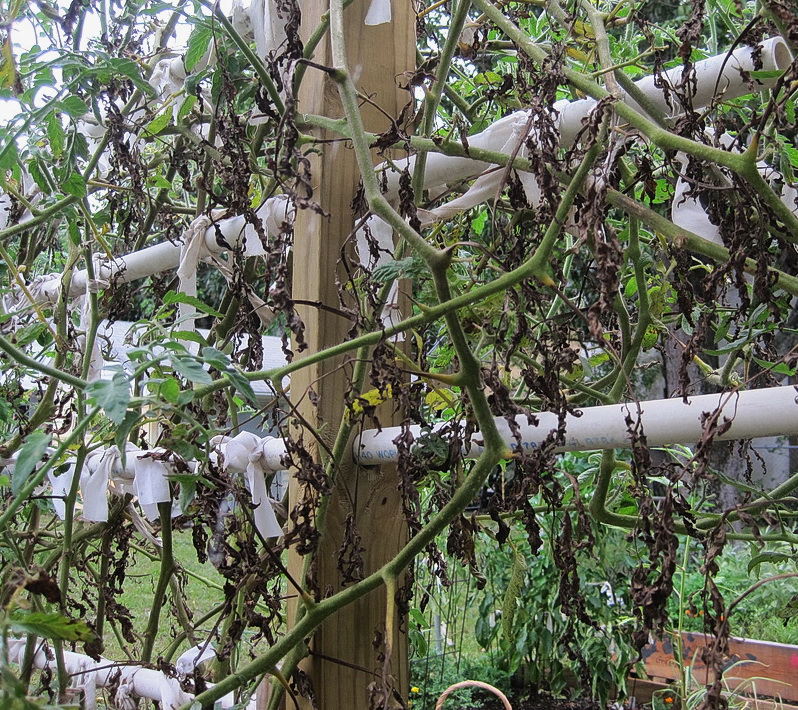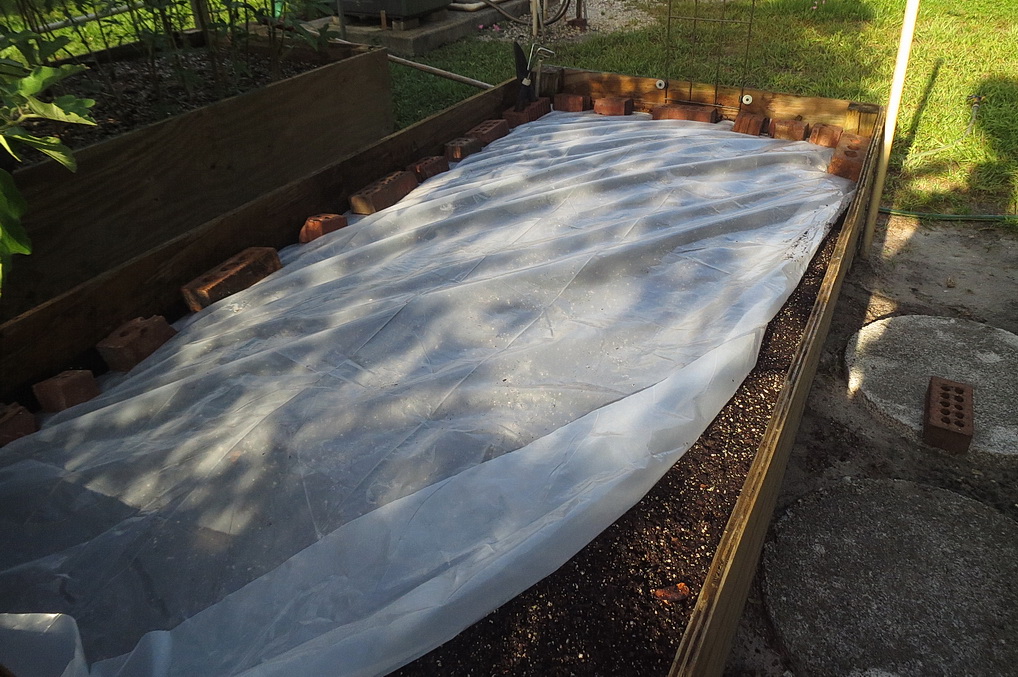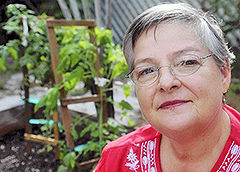Prep Work
In South Florida, when the spring garden quits producing and dries up in July or early August, it is time to remove all the plants and cover it for soil solarization. (Click on the link if you want to know what that means.)
This is necessary to get rid of weeds, insects, grubs, nematodes and other unwanted things in the soil before planting again in October. The heat of the sun kills whatever is in the soil.
Cover the Soil
The garden is covered with clear plastic sheeting, so the sun can heat the soil.
Last season, there was an issue with rainwater pooling on the plastic cover and growing algae. The algae, being dark green and thick, blocked the sun’s heat from getting through the plastic sheets.
When preparing the soil to be covered this time, I decided to rake up a gentle hill in the middle to allow water to run off to the edges of the cover. The plastic is spread flat on the soil, and this year, I folded the edge of the sheet under just enough to make it even with the side of the garden.
Then, I pushed the edges down about half an inch between the soil and the side of the box. This, along with the ‘hill’ in the middle, will allow the water to run off which will prevent pooling on the top of the plastic sheet.
Weight the Cover
I have a pile of red brick pieces that I keep stacked near the garden. I use the bricks as weights to keep the plastic from moving or being blown off until it is removed.
The garden will bake in the sun for about eight weeks. In October, the plastic comes off and planting begins again.
Tags: above ground garden · garden pests · Raised Garden · soil solarization1 Comment





I’ve never heard of this, Lila, interesting info. In Colorado my problem is not so much the bugs, but noxious weeds like bindweed and thistles. It’s a never ending battle to kill them.